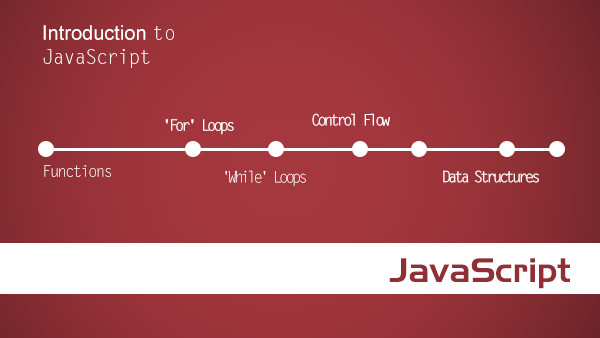当学习成为了习惯,知识也就变成了常识。感谢各位的 点赞、收藏和评论。
文章已收录到 github,欢迎 Watch 和 Star。
简介
从 HTML Entry 的诞生原因 -> 原理简述 -> 实际应用 -> 源码分析,带你全方位刨析 HTML Entry 框架。
序言
HTML Entry 这个词大家可能比较陌生,毕竟在 google 上搜 HTML Entry 是什么 ? 都搜索不到正确的结果。但如果你了解微前端的话,可能就会有一些了解。
致读者
本着不浪费大家时间的原则,特此说明,如果你能读懂 HTML Entry 是什么?? 部分,则可继续往下阅读,如果看不懂建议阅读完推荐资料再回来阅读
JS Entry 有什么问题
说到 HTML Entry 就不得不提另外一个词 JS Entry,因为 HTML Entry 就是来解决 JS Entry 所面临的问题的。
微前端领域最著名的两大框架分别是 single-spa 和 qiankun,后者是基于前者做了二次封装,并解决了前者的一些问题。
single-spa 就做了两件事情:
- 加载微应用(加载方法还得用户自己来实现)
- 管理微应用的状态(初始化、挂载、卸载)
而 JS Entry 的理念就在加载微应用的时候用到了,在使用 single-spa 加载微应用时,我们加载的不是微应用本身,而是微应用导出的 JS 文件,而在入口文件中会导出一个对象,这个对象上有 bootstrap、mount、unmount 这三个接入 single-spa 框架必须提供的生命周期方法,其中 mount 方法规定了微应用应该怎么挂载到主应用提供的容器节点上,当然你要接入一个微应用,就需要对微应用进行一系列的改造,然而 JS Entry 的问题就出在这儿,改造时对微应用的侵入行太强,而且和主应用的耦合性太强。
single-spa 采用 JS Entry 的方式接入微应用。微应用改造一般分为三步:
- 微应用路由改造,添加一个特定的前缀
- 微应用入口改造,挂载点变更和生命周期函数导出
- 打包工具配置更改
侵入型强其实说的就是第三点,更改打包工具的配置,使用 single-spa 接入微应用需要将微应用整个打包成一个 JS 文件,发布到静态资源服务器,然后在主应用中配置该 JS 文件的地址告诉 single-spa 去这个地址加载微应用。
不说其它的,就现在这个改动就存在很大的问题,将整个微应用打包成一个 JS 文件,常见的打包优化基本上都没了,比如:按需加载、首屏资源加载优化、css 独立打包等优化措施。
注意:子应用也可以将包打成多个,然后利用 webpack 的 webpack-manifest-plugin 插件打包出 manifest.json 文件,生成一份资源清单,然后主应用的 loadApp 远程读取每个子应用的清单文件,依次加载文件里面的资源;不过该方案也没办法享受子应用的按需加载能力
项目发布以后出现了 bug ,修复之后需要更新上线,为了清除浏览器缓存带来的应用,一般文件名会带上 chunkcontent,微应用发布之后文件名都会发生变化,这时候还需要更新主应用中微应用配置,然后重新编译主应用然后发布,这套操作简直是不能忍受的,这也是 [微前端框架 之 single-spa 从入门到精通]这篇文章中示例项目中微应用发布时的环境配置选择 development 的原因。
qiankun 框架为了解决 JS Entry 的问题,于是采用了 HTML Entry 的方式,让用户接入微应用就像使用 iframe 一样简单。
如果以上内容没有看懂,则说明这篇文章不太适合你阅读,建议阅读 [微前端框架 之 single-spa 从入门到精通],这篇文章详细讲述了 single-spa 的基础使用和源码原理,阅读完以后再回来读这篇文章会有事半功倍的效果,请读者切勿强行阅读,否则可能出现头昏脑胀的现象。
HTML Entry
HTML Entry 是由 import-html-entry 库实现的,通过 http 请求加载指定地址的首屏内容即 html 页面,然后解析这个 html 模版得到 template, scripts , entry, styles
{
template: 经过处理的脚本,link、script 标签都被注释掉了,
scripts: [脚本的http地址 或者 { async: true, src: xx } 或者 代码块],
styles: [样式的http地址],
entry: 入口脚本的地址,要不是标有 entry 的 script 的 src,要不就是最后一个 script 标签的 src
}
然后远程加载 styles 中的样式内容,将 template 模版中注释掉的 link 标签替换为相应的 style 元素。
然后向外暴露一个 Promise 对象
{
// template 是 link 替换为 style 后的 template
template: embedHTML,
// 静态资源地址
assetPublicPath,
// 获取外部脚本,最终得到所有脚本的代码内容
getExternalScripts: () => getExternalScripts(scripts, fetch),
// 获取外部样式文件的内容
getExternalStyleSheets: () => getExternalStyleSheets(styles, fetch),
// 脚本执行器,让 JS 代码(scripts)在指定 上下文 中运行
execScripts: (proxy, strictGlobal) => {
if (!scripts.length) {
return Promise.resolve();
}
return execScripts(entry, scripts, proxy, { fetch, strictGlobal });
}
}
这就是 HTML Entry 的原理,更详细的内容可继续阅读下面的源码分析部分
实际应用
qiankun 框架为了解决 JS Entry 的问题,就采用了 HTML Entry 的方式,让用户接入微应用就像使用 iframe 一样简单。
通过上面的阅读知道了 HTML Entry 最终会返回一个 Promise 对象,qiankun 就用了这个对象中的 template、assetPublicPath 和 execScripts 三项,将 template 通过 DOM 操作添加到主应用中,执行 execScripts 方法得到微应用导出的生命周期方法,并且还顺便解决了 JS 全局污染的问题,因为执行 execScripts 方法的时候可以通过 proxy 参数指定 JS 的执行上下文。
HTML Entry 源码分析
importEntry
/**
* 加载指定地址的首屏内容
* @param {*} entry 可以是一个字符串格式的地址,比如 localhost:8080,也可以是一个配置对象,比如 { scripts, styles, html }
* @param {*} opts
* return importHTML 的执行结果
*/
export function importEntry(entry, opts = {}) {
// 从 opt 参数中解析出 fetch 方法 和 getTemplate 方法,没有就用默认的
const { fetch = defaultFetch, getTemplate = defaultGetTemplate } = opts;
// 获取静态资源地址的一个方法
const getPublicPath = opts.getPublicPath || opts.getDomain || defaultGetPublicPath;
if (!entry) {
throw new SyntaxError('entry should not be empty!');
}
// html entry,entry 是一个字符串格式的地址
if (typeof entry === 'string') {
return importHTML(entry, { fetch, getPublicPath, getTemplate });
}
// config entry,entry 是一个对象 = { scripts, styles, html }
if (Array.isArray(entry.scripts) || Array.isArray(entry.styles)) {
const { scripts = [], styles = [], html = '' } = entry;
const setStylePlaceholder2HTML = tpl => styles.reduceRight((html, styleSrc) => `${genLinkReplaceSymbol(styleSrc)}${html}`, tpl);
const setScriptPlaceholder2HTML = tpl => scripts.reduce((html, scriptSrc) => `${html}${genScriptReplaceSymbol(scriptSrc)}`, tpl);
return getEmbedHTML(getTemplate(setScriptPlaceholder2HTML(setStylePlaceholder2HTML(html))), styles, { fetch }).then(embedHTML => ({
template: embedHTML,
assetPublicPath: getPublicPath(entry),
getExternalScripts: () => getExternalScripts(scripts, fetch),
getExternalStyleSheets: () => getExternalStyleSheets(styles, fetch),
execScripts: (proxy, strictGlobal) => {
if (!scripts.length) {
return Promise.resolve();
}
return execScripts(scripts[scripts.length - 1], scripts, proxy, { fetch, strictGlobal });
},
}));
} else {
throw new SyntaxError('entry scripts or styles should be array!');
}
}
importHTML
/**
* 加载指定地址的首屏内容
* @param {*} url
* @param {*} opts
* return Promise<{
// template 是 link 替换为 style 后的 template
template: embedHTML,
// 静态资源地址
assetPublicPath,
// 获取外部脚本,最终得到所有脚本的代码内容
getExternalScripts: () => getExternalScripts(scripts, fetch),
// 获取外部样式文件的内容
getExternalStyleSheets: () => getExternalStyleSheets(styles, fetch),
// 脚本执行器,让 JS 代码(scripts)在指定 上下文 中运行
execScripts: (proxy, strictGlobal) => {
if (!scripts.length) {
return Promise.resolve();
}
return execScripts(entry, scripts, proxy, { fetch, strictGlobal });
},
}>
*/
export default function importHTML(url, opts = {}) {
// 三个默认的方法
let fetch = defaultFetch;
let getPublicPath = defaultGetPublicPath;
let getTemplate = defaultGetTemplate;
if (typeof opts === 'function') {
// if 分支,兼容遗留的 importHTML api,ops 可以直接是一个 fetch 方法
fetch = opts;
} else {
// 用用户传递的参数(如果提供了的话)覆盖默认方法
fetch = opts.fetch || defaultFetch;
getPublicPath = opts.getPublicPath || opts.getDomain || defaultGetPublicPath;
getTemplate = opts.getTemplate || defaultGetTemplate;
}
// 通过 fetch 方法请求 url,这也就是 qiankun 为什么要求你的微应用要支持跨域的原因
return embedHTMLCache[url] || (embedHTMLCache[url] = fetch(url)
// response.text() 是一个 html 模版
.then(response => response.text())
.then(html => {
// 获取静态资源地址
const assetPublicPath = getPublicPath(url);
/**
* 从 html 模版中解析出外部脚本的地址或者内联脚本的代码块 和 link 标签的地址
* {
* template: 经过处理的脚本,link、script 标签都被注释掉了,
* scripts: [脚本的http地址 或者 { async: true, src: xx } 或者 代码块],
* styles: [样式的http地址],
* entry: 入口脚本的地址,要不是标有 entry 的 script 的 src,要不就是最后一个 script 标签的 src
* }
*/
const { template, scripts, entry, styles } = processTpl(getTemplate(html), assetPublicPath);
// getEmbedHTML 方法通过 fetch 远程加载所有的外部样式,然后将对应的 link 注释标签替换为 style,即外部样式替换为内联样式,然后返回 embedHTML,即处理过后的 HTML 模版
return getEmbedHTML(template, styles, { fetch }).then(embedHTML => ({
// template 是 link 替换为 style 后的 template
template: embedHTML,
// 静态资源地址
assetPublicPath,
// 获取外部脚本,最终得到所有脚本的代码内容
getExternalScripts: () => getExternalScripts(scripts, fetch),
// 获取外部样式文件的内容
getExternalStyleSheets: () => getExternalStyleSheets(styles, fetch),
// 脚本执行器,让 JS 代码(scripts)在指定 上下文 中运行
execScripts: (proxy, strictGlobal) => {
if (!scripts.length) {
return Promise.resolve();
}
return execScripts(entry, scripts, proxy, { fetch, strictGlobal });
},
}));
}));
}
processTpl
/**
* 从 html 模版中解析出外部脚本的地址或者内联脚本的代码块 和 link 标签的地址
* @param tpl html 模版
* @param baseURI
* @stripStyles whether to strip the css links
* @returns {{template: void | string | *, scripts: *[], entry: *}}
* return {
* template: 经过处理的脚本,link、script 标签都被注释掉了,
* scripts: [脚本的http地址 或者 { async: true, src: xx } 或者 代码块],
* styles: [样式的http地址],
* entry: 入口脚本的地址,要不是标有 entry 的 script 的 src,要不就是最后一个 script 标签的 src
* }
*/
export default function processTpl(tpl, baseURI) {
let scripts = [];
const styles = [];
let entry = null;
// 判断浏览器是否支持 es module,<script type = "module" />
const moduleSupport = isModuleScriptSupported();
const template = tpl
// 移除 html 模版中的注释内容 <!-- xx -->
.replace(HTML_COMMENT_REGEX, '')
// 匹配 link 标签
.replace(LINK_TAG_REGEX, match => {
/**
* 将模版中的 link 标签变成注释,如果有存在 href 属性且非预加载的 link,则将地址存到 styles 数组,如果是预加载的 link 直接变成注释
*/
// <link rel = "stylesheet" />
const styleType = !!match.match(STYLE_TYPE_REGEX);
if (styleType) {
// <link rel = "stylesheet" href = "xxx" />
const styleHref = match.match(STYLE_HREF_REGEX);
// <link rel = "stylesheet" ignore />
const styleIgnore = match.match(LINK_IGNORE_REGEX);
if (styleHref) {
// 获取 href 属性值
const href = styleHref && styleHref[2];
let newHref = href;
// 如果 href 没有协议说明给的是一个相对地址,拼接 baseURI 得到完整地址
if (href && !hasProtocol(href)) {
newHref = getEntirePath(href, baseURI);
}
// 将 <link rel = "stylesheet" ignore /> 变成 <!-- ignore asset ${url} replaced by import-html-entry -->
if (styleIgnore) {
return genIgnoreAssetReplaceSymbol(newHref);
}
// 将 href 属性值存入 styles 数组
styles.push(newHref);
// <link rel = "stylesheet" href = "xxx" /> 变成 <!-- link ${linkHref} replaced by import-html-entry -->
return genLinkReplaceSymbol(newHref);
}
}
// 匹配 <link rel = "preload or prefetch" href = "xxx" />,表示预加载资源
const preloadOrPrefetchType = match.match(LINK_PRELOAD_OR_PREFETCH_REGEX) && match.match(LINK_HREF_REGEX) && !match.match(LINK_AS_FONT);
if (preloadOrPrefetchType) {
// 得到 href 地址
const [, , linkHref] = match.match(LINK_HREF_REGEX);
// 将标签变成 <!-- prefetch/preload link ${linkHref} replaced by import-html-entry -->
return genLinkReplaceSymbol(linkHref, true);
}
return match;
})
// 匹配 <style></style>
.replace(STYLE_TAG_REGEX, match => {
if (STYLE_IGNORE_REGEX.test(match)) {
// <style ignore></style> 变成 <!-- ignore asset style file replaced by import-html-entry -->
return genIgnoreAssetReplaceSymbol('style file');
}
return match;
})
// 匹配 <script></script>
.replace(ALL_SCRIPT_REGEX, (match, scriptTag) => {
// 匹配 <script ignore></script>
const scriptIgnore = scriptTag.match(SCRIPT_IGNORE_REGEX);
// 匹配 <script nomodule></script> 或者 <script type = "module"></script>,都属于应该被忽略的脚本
const moduleScriptIgnore =
(moduleSupport && !!scriptTag.match(SCRIPT_NO_MODULE_REGEX)) ||
(!moduleSupport && !!scriptTag.match(SCRIPT_MODULE_REGEX));
// in order to keep the exec order of all javascripts
// <script type = "xx" />
const matchedScriptTypeMatch = scriptTag.match(SCRIPT_TYPE_REGEX);
// 获取 type 属性值
const matchedScriptType = matchedScriptTypeMatch && matchedScriptTypeMatch[2];
// 验证 type 是否有效,type 为空 或者 'text/javascript', 'module', 'application/javascript', 'text/ecmascript', 'application/ecmascript',都视为有效
if (!isValidJavaScriptType(matchedScriptType)) {
return match;
}
// if it is a external script,匹配非 <script type = "text/ng-template" src = "xxx"></script>
if (SCRIPT_TAG_REGEX.test(match) && scriptTag.match(SCRIPT_SRC_REGEX)) {
/*
collect scripts and replace the ref
*/
// <script entry />
const matchedScriptEntry = scriptTag.match(SCRIPT_ENTRY_REGEX);
// <script src = "xx" />
const matchedScriptSrcMatch = scriptTag.match(SCRIPT_SRC_REGEX);
// 脚本地址
let matchedScriptSrc = matchedScriptSrcMatch && matchedScriptSrcMatch[2];
if (entry && matchedScriptEntry) {
// 说明出现了两个入口地址,即两个 <script entry src = "xx" />
throw new SyntaxError('You should not set multiply entry script!');
} else {
// 补全脚本地址,地址如果没有协议,说明是一个相对路径,添加 baseURI
if (matchedScriptSrc && !hasProtocol(matchedScriptSrc)) {
matchedScriptSrc = getEntirePath(matchedScriptSrc, baseURI);
}
// 脚本的入口地址
entry = entry || matchedScriptEntry && matchedScriptSrc;
}
if (scriptIgnore) {
// <script ignore></script> 替换为 <!-- ignore asset ${url || 'file'} replaced by import-html-entry -->
return genIgnoreAssetReplaceSymbol(matchedScriptSrc || 'js file');
}
if (moduleScriptIgnore) {
// <script nomodule></script> 或者 <script type = "module"></script> 替换为
// <!-- nomodule script ${scriptSrc} ignored by import-html-entry --> 或
// <!-- module script ${scriptSrc} ignored by import-html-entry -->
return genModuleScriptReplaceSymbol(matchedScriptSrc || 'js file', moduleSupport);
}
if (matchedScriptSrc) {
// 匹配 <script src = 'xx' async />,说明是异步加载的脚本
const asyncScript = !!scriptTag.match(SCRIPT_ASYNC_REGEX);
// 将脚本地址存入 scripts 数组,如果是异步加载,则存入一个对象 { async: true, src: xx }
scripts.push(asyncScript ? { async: true, src: matchedScriptSrc } : matchedScriptSrc);
// <script src = "xx" async /> 或者 <script src = "xx" /> 替换为
// <!-- async script ${scriptSrc} replaced by import-html-entry --> 或
// <!-- script ${scriptSrc} replaced by import-html-entry -->
return genScriptReplaceSymbol(matchedScriptSrc, asyncScript);
}
return match;
} else {
// 说明是内部脚本,<script>xx</script>
if (scriptIgnore) {
// <script ignore /> 替换为 <!-- ignore asset js file replaced by import-html-entry -->
return genIgnoreAssetReplaceSymbol('js file');
}
if (moduleScriptIgnore) {
// <script nomodule></script> 或者 <script type = "module"></script> 替换为
// <!-- nomodule script ${scriptSrc} ignored by import-html-entry --> 或
// <!-- module script ${scriptSrc} ignored by import-html-entry -->
return genModuleScriptReplaceSymbol('js file', moduleSupport);
}
// if it is an inline script,<script>xx</script>,得到标签之间的代码 => xx
const code = getInlineCode(match);
// remove script blocks when all of these lines are comments. 判断代码块是否全是注释
const isPureCommentBlock = code.split(/[\r\n]+/).every(line => !line.trim() || line.trim().startsWith('//'));
if (!isPureCommentBlock) {
// 不是注释,则将代码块存入 scripts 数组
scripts.push(match);
}
// <script>xx</script> 替换为 <!-- inline scripts replaced by import-html-entry -->
return inlineScriptReplaceSymbol;
}
});
// filter empty script
scripts = scripts.filter(function (script) {
return !!script;
});
return {
template,
scripts,
styles,
// set the last script as entry if have not set
entry: entry || scripts[scripts.length - 1],
};
}
getEmbedHTML
/**
* convert external css link to inline style for performance optimization,外部样式转换成内联样式
* @param template,html 模版
* @param styles link 样式链接
* @param opts = { fetch }
* @return embedHTML 处理过后的 html 模版
*/
function getEmbedHTML(template, styles, opts = {}) {
const { fetch = defaultFetch } = opts;
let embedHTML = template;
return getExternalStyleSheets(styles, fetch)
.then(styleSheets => {
// 通过循环,将之前设置的 link 注释标签替换为 style 标签,即 <style>/* href地址 */ xx </style>
embedHTML = styles.reduce((html, styleSrc, i) => {
html = html.replace(genLinkReplaceSymbol(styleSrc), `<style>/* ${styleSrc} */${styleSheets[i]}</style>`);
return html;
}, embedHTML);
return embedHTML;
});
}
getExternalScripts
/**
* 加载脚本,最终返回脚本的内容,Promise<Array>,每个元素都是一段 JS 代码
* @param {*} scripts = [脚本http地址 or 内联脚本的脚本内容 or { async: true, src: xx }]
* @param {*} fetch
* @param {*} errorCallback
*/
export function getExternalScripts(scripts, fetch = defaultFetch, errorCallback = () => {
}) {
// 定义一个可以加载远程指定 url 脚本的方法,当然里面也做了缓存,如果命中缓存直接从缓存中获取
const fetchScript = scriptUrl => scriptCache[scriptUrl] ||
(scriptCache[scriptUrl] = fetch(scriptUrl).then(response => {
// usually browser treats 4xx and 5xx response of script loading as an error and will fire a script error event
// https://stackoverflow.com/questions/5625420/what-http-headers-responses-trigger-the-onerror-handler-on-a-script-tag/5625603
if (response.status >= 400) {
errorCallback();
throw new Error(`${scriptUrl} load failed with status ${response.status}`);
}
return response.text();
}));
return Promise.all(scripts.map(script => {
if (typeof script === 'string') {
// 字符串,要不是链接地址,要不是脚本内容(代码)
if (isInlineCode(script)) {
// if it is inline script
return getInlineCode(script);
} else {
// external script,加载脚本
return fetchScript(script);
}
} else {
// use idle time to load async script
// 异步脚本,通过 requestIdleCallback 方法加载
const { src, async } = script;
if (async) {
return {
src,
async: true,
content: new Promise((resolve, reject) => requestIdleCallback(() => fetchScript(src).then(resolve, reject))),
};
}
return fetchScript(src);
}
},
));
}
getExternalStyleSheets
/**
* 通过 fetch 方法加载指定地址的样式文件
* @param {*} styles = [ href ]
* @param {*} fetch
* return Promise<Array>,每个元素都是一堆样式内容
*/
export function getExternalStyleSheets(styles, fetch = defaultFetch) {
return Promise.all(styles.map(styleLink => {
if (isInlineCode(styleLink)) {
// if it is inline style
return getInlineCode(styleLink);
} else {
// external styles,加载样式并缓存
return styleCache[styleLink] ||
(styleCache[styleLink] = fetch(styleLink).then(response => response.text()));
}
},
));
}
execScripts
/**
* FIXME to consistent with browser behavior, we should only provide callback way to invoke success and error event
* 脚本执行器,让指定的脚本(scripts)在规定的上下文环境中执行
* @param entry 入口地址
* @param scripts = [脚本http地址 or 内联脚本的脚本内容 or { async: true, src: xx }]
* @param proxy 脚本执行上下文,全局对象,qiankun JS 沙箱生成 windowProxy 就是传递到了这个参数
* @param opts
* @returns {Promise<unknown>}
*/
export function execScripts(entry, scripts, proxy = window, opts = {}) {
const {
fetch = defaultFetch, strictGlobal = false, success, error = () => {
}, beforeExec = () => {
},
} = opts;
// 获取指定的所有外部脚本的内容,并设置每个脚本的执行上下文,然后通过 eval 函数运行
return getExternalScripts(scripts, fetch, error)
.then(scriptsText => {
// scriptsText 为脚本内容数组 => 每个元素是一段 JS 代码
const geval = (code) => {
beforeExec();
(0, eval)(code);
};
/**
*
* @param {*} scriptSrc 脚本地址
* @param {*} inlineScript 脚本内容
* @param {*} resolve
*/
function exec(scriptSrc, inlineScript, resolve) {
// 性能度量
const markName = `Evaluating script ${scriptSrc}`;
const measureName = `Evaluating Time Consuming: ${scriptSrc}`;
if (process.env.NODE_ENV === 'development' && supportsUserTiming) {
performance.mark(markName);
}
if (scriptSrc === entry) {
// 入口
noteGlobalProps(strictGlobal ? proxy : window);
try {
// bind window.proxy to change `this` reference in script
geval(getExecutableScript(scriptSrc, inlineScript, proxy, strictGlobal));
const exports = proxy[getGlobalProp(strictGlobal ? proxy : window)] || {};
resolve(exports);
} catch (e) {
// entry error must be thrown to make the promise settled
console.error(`[import-html-entry]: error occurs while executing entry script ${scriptSrc}`);
throw e;
}
} else {
if (typeof inlineScript === 'string') {
try {
// bind window.proxy to change `this` reference in script,就是设置 JS 代码的执行上下文,然后通过 eval 函数运行运行代码
geval(getExecutableScript(scriptSrc, inlineScript, proxy, strictGlobal));
} catch (e) {
// consistent with browser behavior, any independent script evaluation error should not block the others
throwNonBlockingError(e, `[import-html-entry]: error occurs while executing normal script ${scriptSrc}`);
}
} else {
// external script marked with async,异步加载的代码,下载完以后运行
inlineScript.async && inlineScript?.content
.then(downloadedScriptText => geval(getExecutableScript(inlineScript.src, downloadedScriptText, proxy, strictGlobal)))
.catch(e => {
throwNonBlockingError(e, `[import-html-entry]: error occurs while executing async script ${inlineScript.src}`);
});
}
}
// 性能度量
if (process.env.NODE_ENV === 'development' && supportsUserTiming) {
performance.measure(measureName, markName);
performance.clearMarks(markName);
performance.clearMeasures(measureName);
}
}
/**
* 递归
* @param {*} i 表示第几个脚本
* @param {*} resolvePromise 成功回调
*/
function schedule(i, resolvePromise) {
if (i < scripts.length) {
// 第 i 个脚本的地址
const scriptSrc = scripts[i];
// 第 i 个脚本的内容
const inlineScript = scriptsText[i];
exec(scriptSrc, inlineScript, resolvePromise);
if (!entry && i === scripts.length - 1) {
// resolve the promise while the last script executed and entry not provided
resolvePromise();
} else {
// 递归调用下一个脚本
schedule(i + 1, resolvePromise);
}
}
}
// 从第 0 个脚本开始调度
return new Promise(resolve => schedule(0, success || resolve));
});
}
结语
以上就是 HTML Entry 的全部内容,也是深入理解 微前端、single-spa、qiankun 不可或缺的一部分,源码在 github
感谢各位的:点赞、收藏和评论,我们下期见。
当学习成为了习惯,知识也就变成了常识。感谢各位的 点赞、收藏和评论。
文章已收录到 github,欢迎 Watch 和 Star。

 随时随地看视频
随时随地看视频




